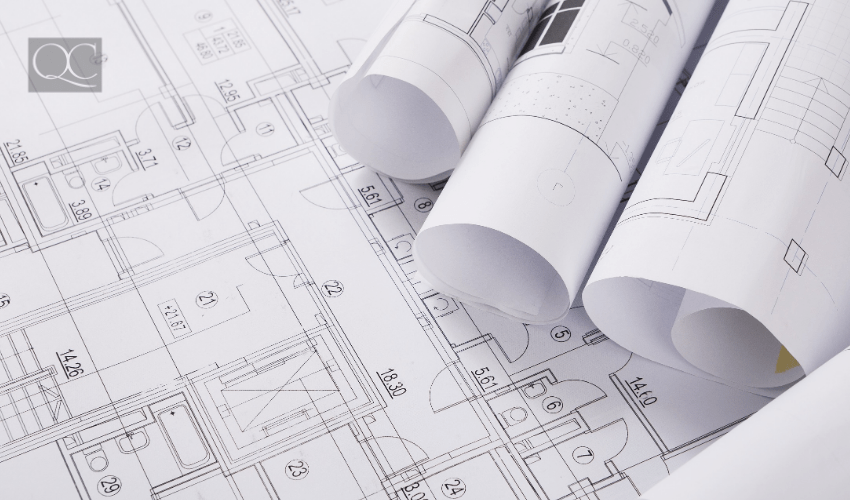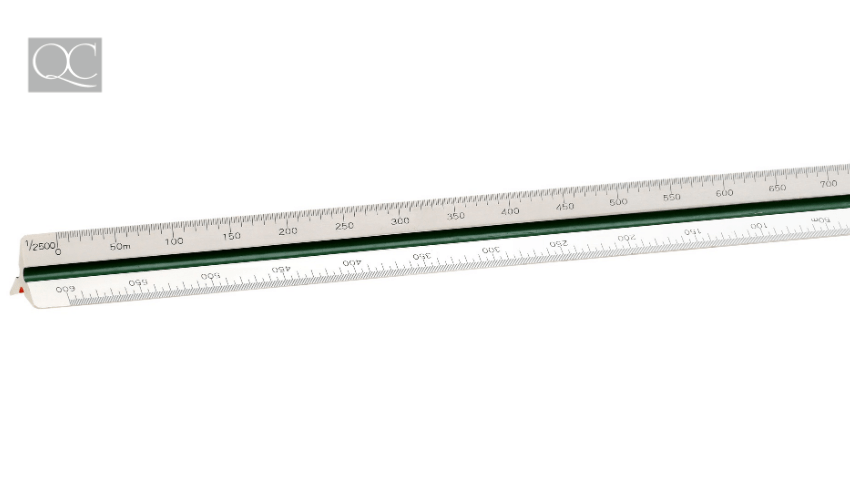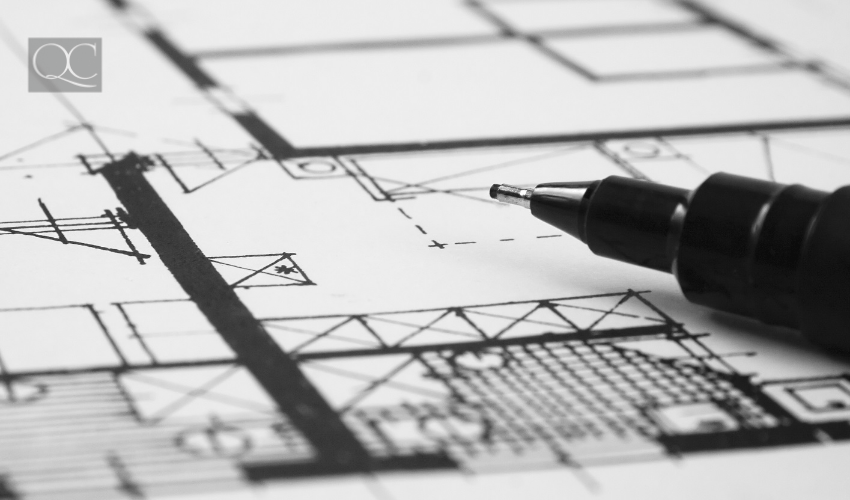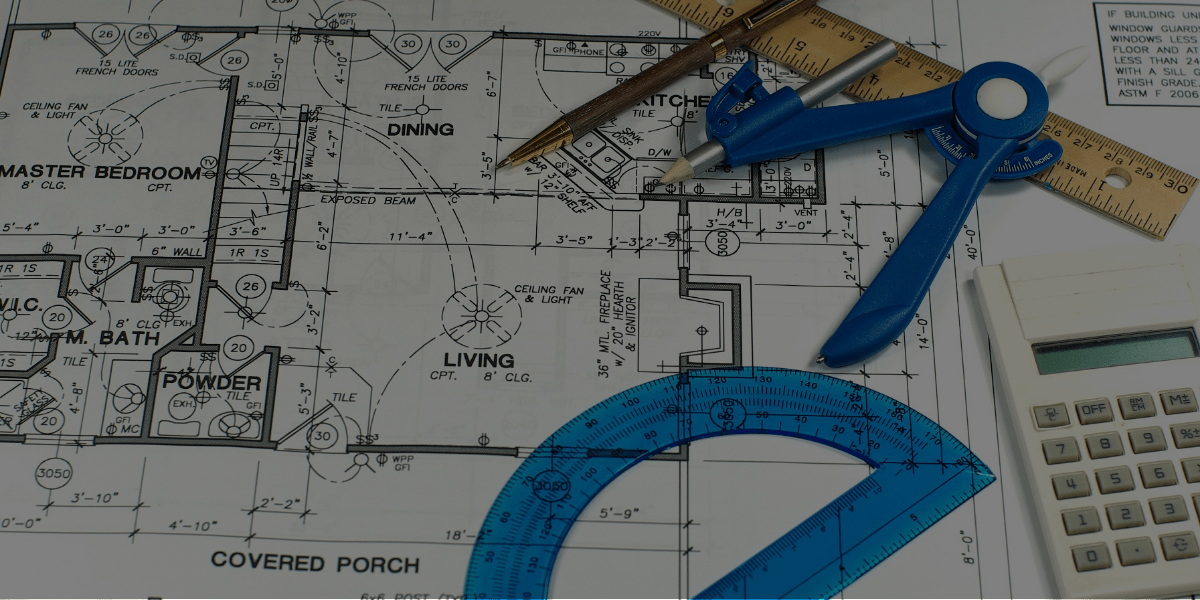So, you’ve finally decided to pursue your dream career as an interior designer. Way to go! Now the next logical step is to get some professional training under your belt. After all, an eye for design is great – but it can only get you so far. If you want to truly succeed, you’ll need the technical skills that’ll help you turn your ideas into actual design plans.
If you want to know how to become an interior designer, one of the key skills you’ll need to have is the ability to draw to scale. After all, you can’t create a functional design without drawing a floorplan that accurately represents your client’s space. But if it’s been a while since your last math class, drawing to scale can seem complicated.
Not to worry, though! In this post, we’ll de-mystify the concept of scale.
How to Become an Interior Designer: Understanding Scale Drawing
A scale drawing shows an accurate representation of a real-life space – but with smaller, proportional measurements. Creating plans to scale is an essential and practical design industry standard. But why is this?
There’s actually a very simply reason: designers use scale because you can’t realistically draw life-sized floorplans. This would take far too long and be far too complicated. When you draw a floorplan to scale, you can instead create a visual representation of the real-life room.
So, how do you create a scale drawing? By taking real-life measurements and reducing them using a uniform ratio! This way, they fit on the page. If you took a scale drawing and blew it up to real-life size, all the proportions would be accurate. The design would fit in the real room, like a hand in a glove. Pretty cool, right?
Scale drawing also helps you design a room without being in the room itself. Imagine that you’re trying to place furniture to a room design. Designing to scale will give you accurate idea of how the pieces will work together and fit in the space, even if you’re not currently in that space.

What Are Scale Ratios?
The One-Inch Scale
When we say a drawing is “to scale,” what we mean is that one unit of measurement on the paper equals one unit of measurement in real life. For example, 1 inch on paper can represent 1 foot in real life. This would be called one-inch (1”) scale. One-inch scale is also sometimes represented as a ratio. This ratio is written as “1:12”, because 1 inch on paper = 1 foot (or 12 inches) in real life.
Let’s say, for example, that a dining table is drawn using a one-inch scale. On the page, the table top measures 3 inches wide by 4 inches long. Because 1 inch on the page represents 1 foot in real life, you know that this table top will be 3 feet wide by 4 feet long when placed in your client’s actual room.
The Quarter-Inch Scale
Although a one-inch scale is the easiest to work with, it often makes floorplans that are too big to be useful. A one-inch scale drawing of a room might still be too big to fit on a page.
For this reason, interior designers typically use a quarter-inch scale to create scaled drawings. This means that 1/4 inches on paper represents one foot in real life.
With that in mind, let’s reconsider that same dining table. Remember, the table is 3 feet wide in real life. Since 1/4 inches on the page represents 1 foot in real life, you’ll need to multiply 1/4 inches by 3 in order to determine the scaled measurement on the page.
1/4 inches multiplied by 3 equals 3/4 inches. So, on paper, the dining table will be 3/4 inches wide. Phew! That wasn’t so hard, right?
Now let’s find the length of the dining table using this same quarter-inch scale. Remember, the table is 4 feet long in real life. So, we’ll need to multiply 1/4 inches by 4. Here, the answer is 1 inch. Therefore, on paper, the dining table will be 1 inch long.

We Get It, Math Can Be Confusing…
Not everyone comprehends mathematics as easily as others. If you’re someone who struggles with calculations (we feel you), perhaps the above sounds a bit confusing. However, once you grasp the core concepts, you’ll find that the math is actually quite simple!
There are two helpful tricks that can make your life easier. These tricks will help you figure out real-life measurements when looking at a scale drawing – or figure out scaled-down measurements based on real-life.
How to Become an Interior Designer: 2 Tricks to Remember
1. Floorplan Measurement ÷ Scale = The Real-Life Measurement
If you’re looking at a scaled drawing of a room and you want to calculate its real-life measurements, divide the measurement on the page by the scale used in the plan.
For example, a dining table measures 1 inch long on the page and the floorplan was drawn with the Quarter-Inch (1/4) Scale. Thus, you’d use the following equation to find the table’s real-life length:
Floorplan measurement ÷ scale = real-life measurement
In the above example, we would divide 1 by 1/4, which equals 4. If an object on the page is 1 inch long, and the scale used for the floorplan is 1/4 inches, it then follows that the object is 4 feet in real life.
2. The Real-Life Measurement x Scale = The Floorplan Measurement
If you have the table’s real-life measurements and you want to draw it in your design floorplan using the ¼ inch scale, you’ll multiply the real-life measurement by the scale. Here’s what that looks like:
Real-life measurement x scale = floorplan measurement
Using the same hypothetical measurements as before, let’s say that you know the dining table is 4 feet long. As such, you’d multiple 4 by 1/4, which equals 1. Therefore, you now know that when drawing the dining table to scale on the floorplan, it’ll need to be 1 inch long.
Pro Tip: Don’t worry, you won’t be expected to do all of these calculations in your head. You’re always free to use a calculator whenever needed!

How to Become an Interior Designer: Knowing the Architect’s Scale
We’re sure you’ve heard the phrase, “the right tool for the job”. As an interior designer, the right tool for YOU is an architect’s scale.
An architect’s scale is a six-sided ruler that provides measurements for twelve different scales. On a standard 12-inch ruler, each side uses a single unit of measurement, which you then use to measure from left to right.
The architect’s scale is different. Here, you can measure from left to right or right to left – depending on which side of the ruler you’re using. For instance, the 1/8-inch measurement on an architect’s scale starts at the left edge of the ruler. The 1/4-inch scale, however, begins on the right side of the ruler, and is read right to left.
Another difference is that a standard ruler measures in inches and centimeters. But an architect’s scale provides the scale measurements typically used in design:
- 1 inch;
- 1 ½ inches;
- 3 inches;
- 1/4 inches;
- 1/8 inches;
- 3/4 inches;
- 3/16 inches;
- And so on.
Why You’ll Like The Architect’s Scale
Perhaps you want to know how to become an interior designer and make this your full-time career… but as we touched on earlier, you aren’t so crazy about the math side of things. Well, you’ll be thrilled to know that an architect’s scale can take some of that math out of the equation!
(Ba-dum-tss!)
All puns aside, the architect’s scale really does reduce the amount of math you’d otherwise need to put into a scale drawing. The markings on each side of an architect’s scale have already converted “real-life measurements” into a scale. This way, you can use them when you draw your design floorplans.
For example, take a look at your own architect’s scale. Now turn to the side labelled “1/4.” This side of the ruler allows you to draw scaled floorplans using a quarter-inch scale. Each full increment on that side of the ruler is actually 1/4 inches long, but represents one foot in real life.
You might find it difficult to use the architect’s scale at first. But that’s okay! Becoming an interior designer doesn’t happen overnight – and neither does mastering all of the complicated concepts. The key is to not be intimidated by this tool. In reality, it looks more complicated than it actually is.
Once you’ve mastered it, you’ll wonder why you didn’t learn about it sooner! The best way to get comfortable with an architect’s scale is to use it. So, start practicing. After all, practice makes perfect.

Don’t let the technical side of design discourage you from pursuing your dream of becoming an interior designer! Understanding scale and making technical drawings are difficult parts of learning design. Practice drawing scaled floorplans of the rooms in your own home. This will help you get more comfortable with the process.
Before long, you’ll be using this skill to turn floorplans into fully-realized designs – and transform real rooms for real clients!


